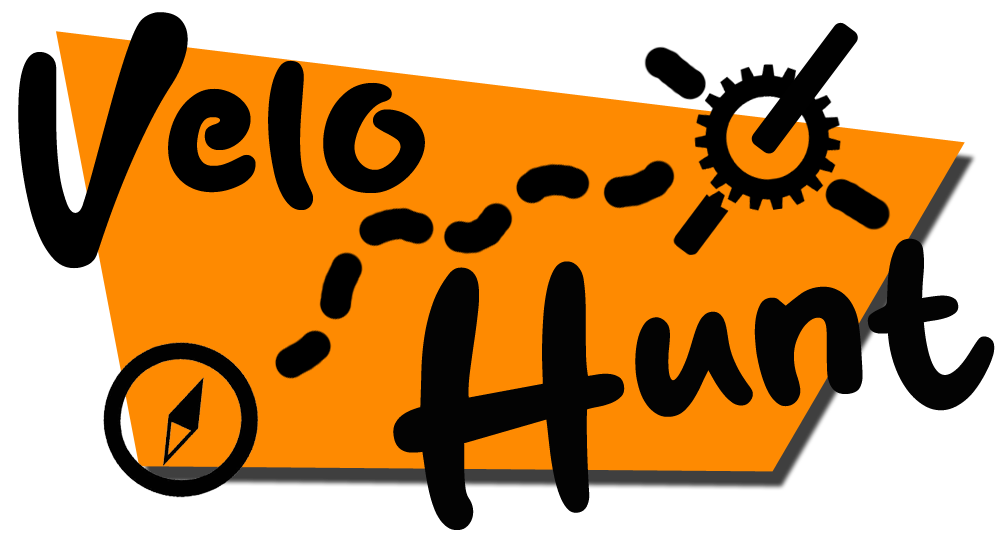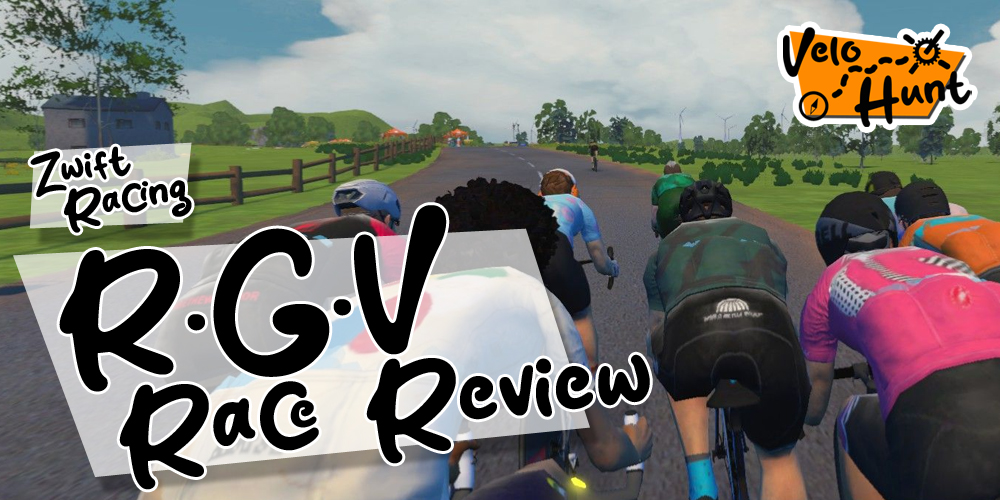The July Z-Racing series is themed around the Tour de France, which comes as no surprise given that Zwift is one of the main sponsors of the race. I anticipated a lot of Tour-related features, but surprisingly, there are no new roads in France this time around. However, Zwift has introduced some new features, the most significant for racing being the testing of the "Racing Score," a metric they hope to use for race enforcement in the future.
Stage one of the series takes place on the R.G.V course. This marks my third time racing this route, and I am quite familiar with its roads. My past experiences on the R.G.V have been mixed, but I consider it a strong course for my abilities, and I entered the race with high hopes for a top finish.
What is Zwift Racing Score?
The Zwift Racing Score, ranging from 0 to 1000, categorises racers into groups for events, with higher scores indicating better performance. For instance, July's ZRacing events use these ranges: 725-1000, 575-725, 400-575, 225-400, and 0-225. Each rider starts with a "seed" score based on their 30-second power, 10-minute power, and body weight. Zwift normalises these power values by weight and further adjusts them to ensure fairness, resulting in an initial score within the 0-1000 range.
Your score will mainly change based on your race finishing positions and the quality of your competition. Although Zwift hasn’t disclosed the precise formula, the method described aligns with standard expectations for such scoring systems.
To find your racing score you will need to join the Zwift Labs Club. Once joined your racing score will then appear on your profile within the companion app.
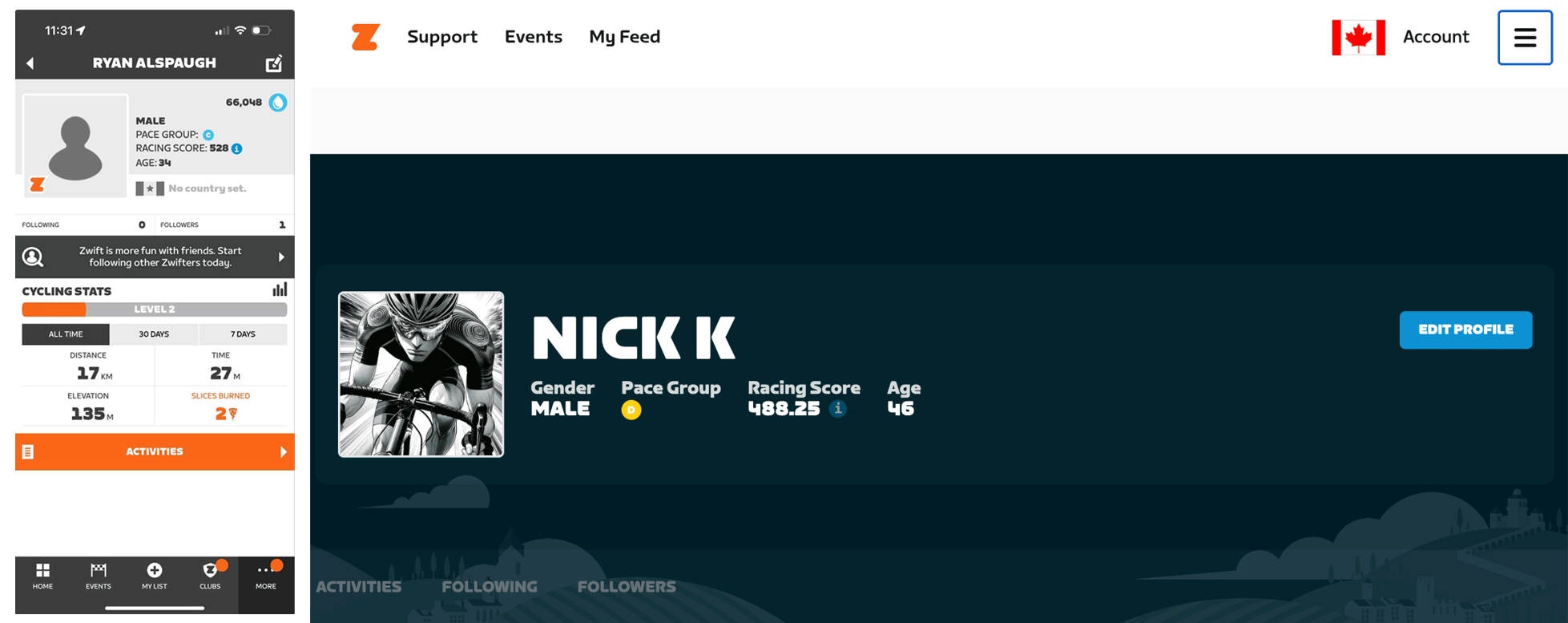
Race strategy for racing on the R.G.V route on Zwift
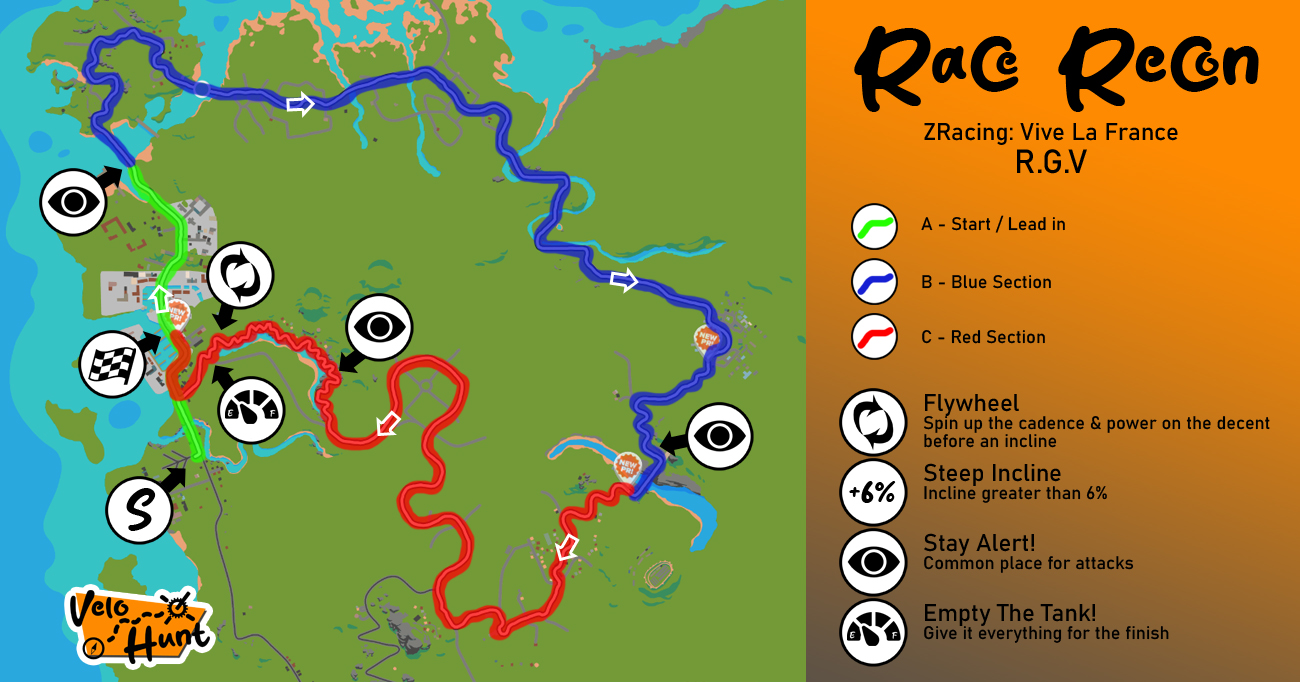
The R.G.V route offers a straightforward strategic approach. Opting for a standard aero road bike with disc wheels will provide the quickest option around the course. The race begins on a very flat section, likely resulting in a prolonged push off the line before the pace eventually settles.
A key point to watch is the Aqueduct Reverse climb at the 13 km mark. Pay attention here, as a power-up is available at the top, which can be crucial on the descent if you find yourself losing the wheel.
The race becomes particularly dynamic in the twisty Les Intestins section, beginning 4 km from the finish. This is where the action intensifies, so be prepared to counter attacks on the small final ramps to secure your position.
The Zwift Race Strategy really mixed up the action
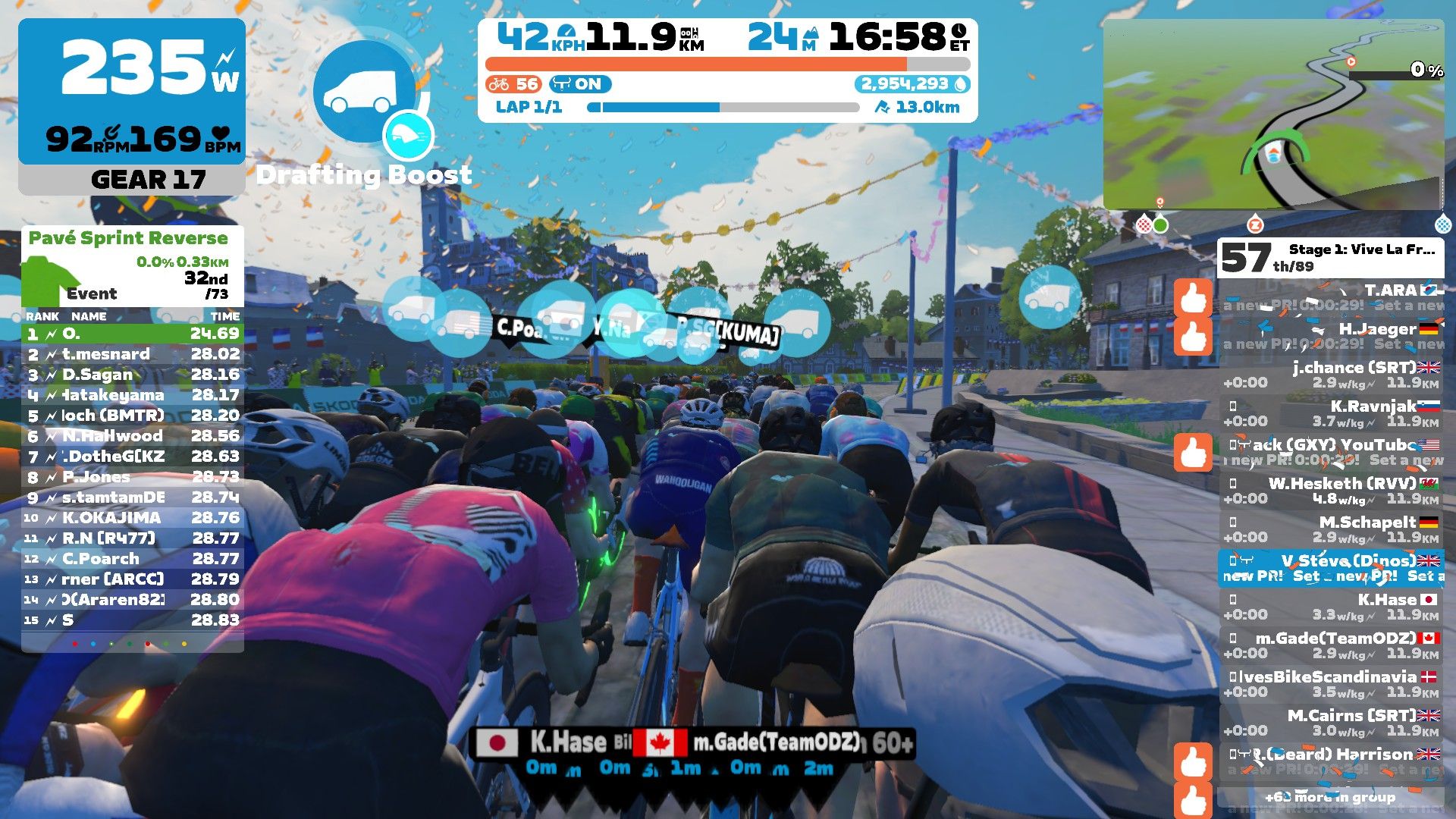
I raced the R.G.V route at lunchtime with around 90 other riders. Getting into the pen early ensured a great start off the line. The initial push from the start lasted much longer than I anticipated, I was also surprised that it resulted in a very large lead group of about 70 riders. I settled into the race at the back of this group, but the pace was more intense than expected, and I frequently found myself forced to the rear.
As we approached the Aqueduct, the pace increased further as everyone vied for a position at the front. Staying calm, I pushed at my limit during the climb and was pleased to find myself in sight of the front by the time we reached the top. However, I made a critical mistake by letting my guard down. The group continued to push over the top, and I found myself 4 seconds behind. Despite using my aero boost and making a significant effort to rejoin, I fell short by just 2 seconds and had to sit up to join the chasing group.
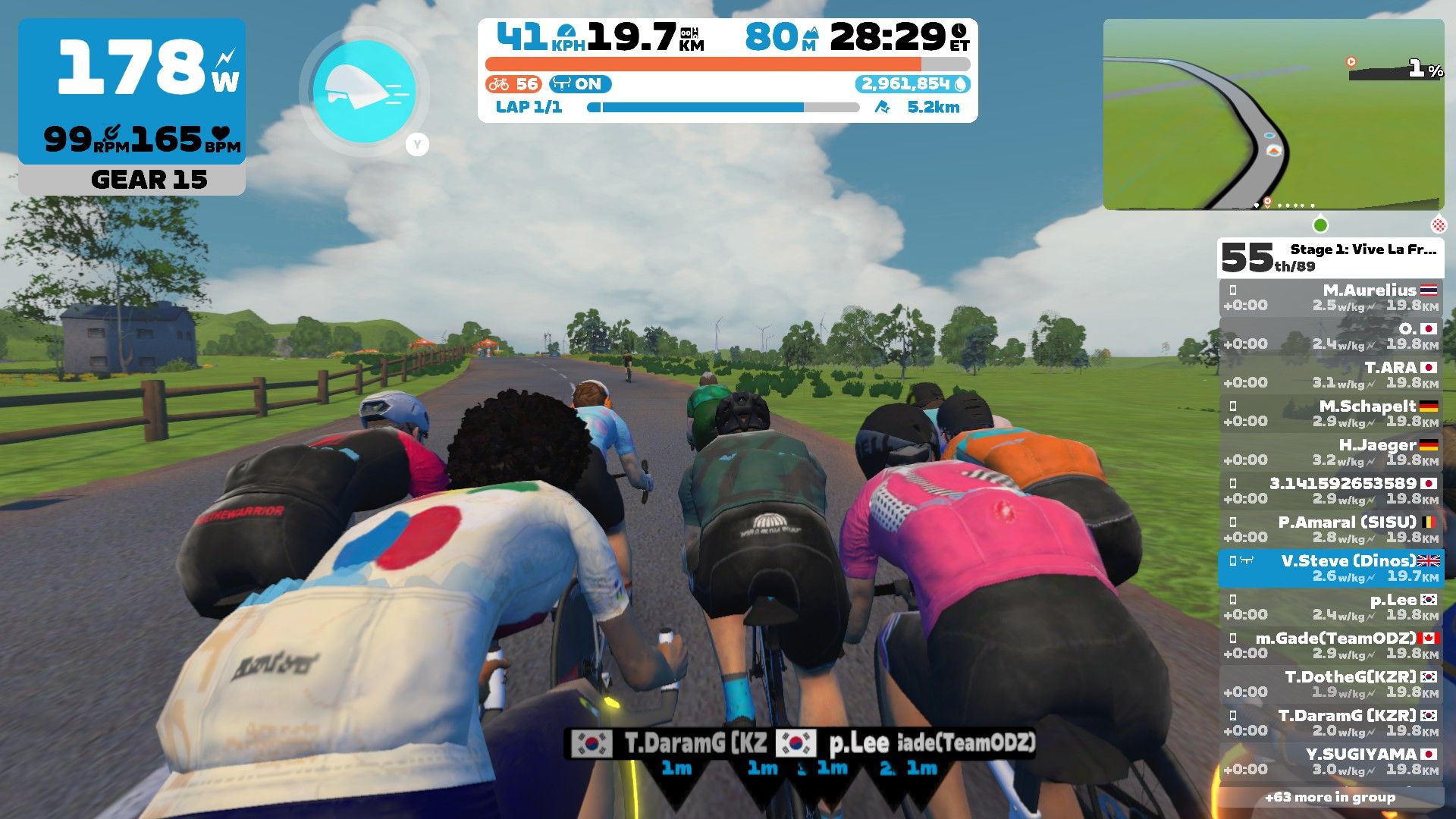
This chasing group consisted of about 15 riders and pushed harder than I anticipated. I stayed with them, wondering if I was simply having a bad legs day. We battled through the twisty Les Intestins section, and I managed a strong sprint to the finish, but it was only enough to secure 48th place.
My conclusion of the Zwift Race Score and R.G.V course
I am a big fan of the R.G.V course in France, though I find I enjoy it more as a training route than a racing one. This is primarily because there aren't enough opportunities to attack or animate the race effectively.
The new Zwift Race Score significantly impacted my experience, making the race much tougher. Under the traditional W/KG method, I was typically a mid to upper Cat C racer. However, with the Race Score categories, I seem to fall into the lower Cat C range based on my score. Despite pushing out significantly more watts and finishing nearly two minutes faster, I noticed some of the winners had W/KG scores that would definitely place them in a traditional Cat B category.
It's too early to form a definitive opinion on the Race Score method, but I do believe it holds promise. It might reduce my chances of winning through race strategy alone, but it will undoubtedly encourage me to push my fitness harder. And that’s the main reason I race. I am curious to see how future races unfold with this new system.
